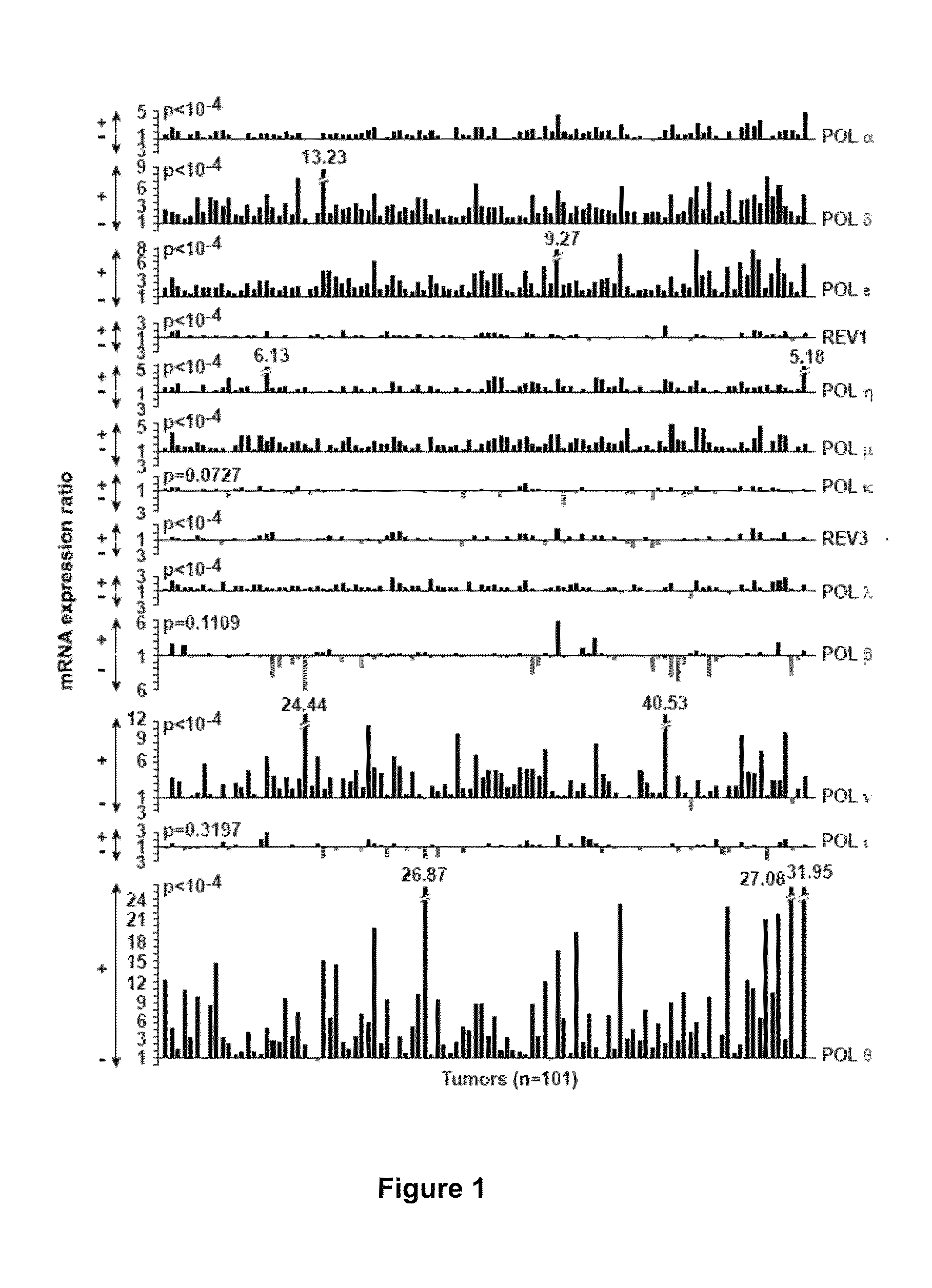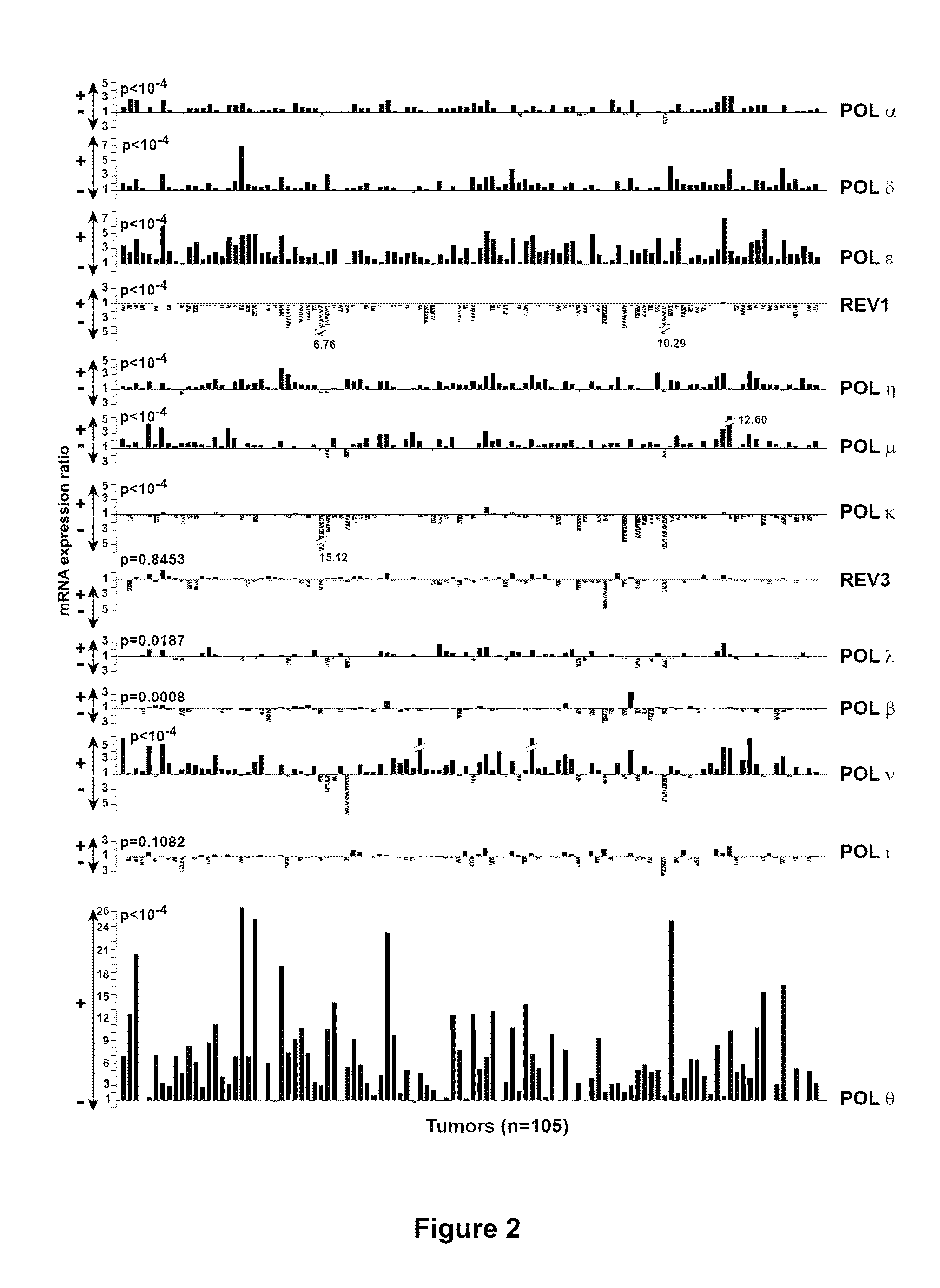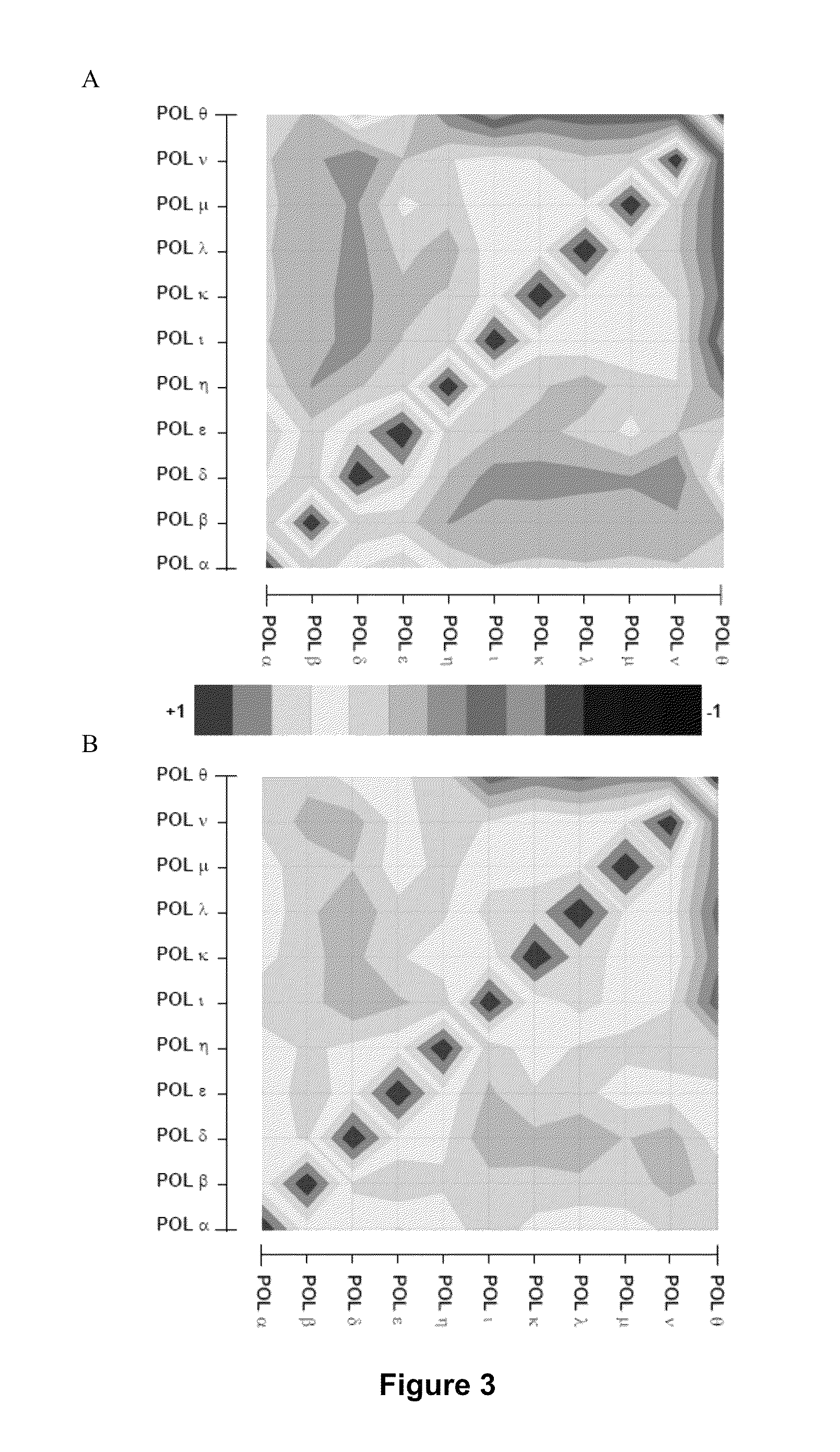Signature for the diagnosis of cancer aggressiveness and genetic instability
a genetic instability and cancer technology, applied in the field of cancer management, can solve the problems of adverse toxicities, significant affecting the quality of life of patients, and affecting the patient's health
- Summary
- Abstract
- Description
- Claims
- Application Information
AI Technical Summary
Benefits of technology
Problems solved by technology
Method used
Image
Examples
examples
1. Material and Methods
1.1. Breast Cancer
1.1.1. Study Design, Patients and Tumor Samples, Differential Gene Expression
[0075]Patients included consisted of a subset of patients from an adjuvant multicentric phase III clinical trial (PACS01 trial). The results of this clinical trial have been published elsewhere (Roché et al. J Clin Oncol 24: 5664-5671, 2006). Tumor samples from this cohort (n=206) were divided into two sets for genotyping (n=101 and n=105). Normal breast tissues were obtained at the Claudius Regaud Institute (Toulouse, France) and taken from the surgical specimen, at more than 3 cm from the breast cancer. Characteristics of patients and tumors from the cohort are described in Table 1.
[0076]
TABLE 1Baseline characteristics of patients and tumorsFrench cohortSet 1 (n = 101)Set 2 (n = 105)n. ofn. ofCharacteristicspatients%patients%Age (years)Median4950.8Range29-6431-64 Premenopausal7069.315855.24SurgeryLocal excision6059.415451.43Mastectomy4140.595148.57Pathologic tumors...
PUM
| Property | Measurement | Unit |
|---|---|---|
| diameter | aaaaa | aaaaa |
| time | aaaaa | aaaaa |
| time | aaaaa | aaaaa |
Abstract
Description
Claims
Application Information
 Login to View More
Login to View More - R&D
- Intellectual Property
- Life Sciences
- Materials
- Tech Scout
- Unparalleled Data Quality
- Higher Quality Content
- 60% Fewer Hallucinations
Browse by: Latest US Patents, China's latest patents, Technical Efficacy Thesaurus, Application Domain, Technology Topic, Popular Technical Reports.
© 2025 PatSnap. All rights reserved.Legal|Privacy policy|Modern Slavery Act Transparency Statement|Sitemap|About US| Contact US: help@patsnap.com



